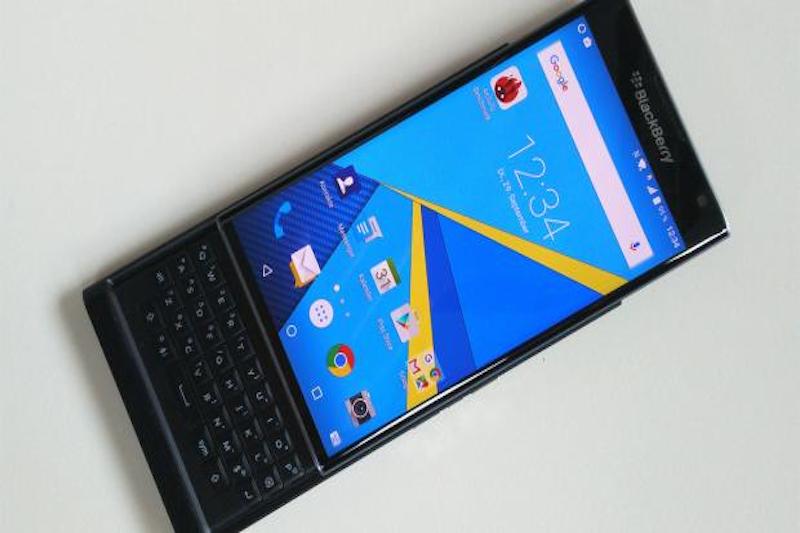BlackBerry Priv review: Could it be Blackberry's saviour?
BlackBerry stops making its own smartphones


The Blackberry Priv is the latest device from the ailing smartphone manufacturer, but it could be the one that finally sees them become a market-leading force once more.
That’s because Blackberry has finally done what fans and critics alike have been urging them to for years, and ditched its tired, clapped-out operating system.
The Priv is the first Blackberry to run Android as its standard OS, twinning the cutting-edge modern operating system with one of its own best-loved features – a physical keyboard, which slides out from the rear of the phone.
But is this new direction enough to claw the company back from the brink of oblivion?
Software
Ditching its own-brand OS is the best decision that Blackberry has ever made. There’s a reason that every other manufacturer (besides the obvious) has thrown in with Google’s software, and this search now means that Blackberry fans can take advantage of the vast ecosystem of apps and services that other Android users have been enjoying.
For the most part, it works exactly as you’d expect. Android Lollipop is a great OS, and the Priv works well with it. We’ve heard complaints that as many of Android’s text input fields are at the top of the screen, they can be a hassle to reach with the keyboard extended.
The Priv measures over 7 inches when slid out fully, so it is hard to reach some things with the keyboard out. On the other hand, it’s a snap to close it for easier reach and then open it up again, so we never really found it to be that much of a problem.
ChannelPro Newsletter
Stay up to date with the latest Channel industry news and analysis with our twice-weekly newsletter
As an added bonus, not only does it have all of the standard Android elements, the Priv also has the best bits of Blackberry’s old OS. The oft-lauded Blackberry Link feature is here, which allows you to sync notifications and files between your desktop and smartphone, along with the superlative Blackberry hub.
For those unfamiliar with the app, it collects all your messages – text, email, and even Twitter and Facebook notifications – into one cohesive inbox. As well as being convenient, this also allows you to manage them with certain rules and functions, such as the Snooze option.
Any message or notification in the Blackberry Hub that you don’t particularly want to deal with right now can be ‘snoozed’, and will reappear later on. This can be at a certain time, or in a particularly cool feature, when you reach a preset location or connect to a specific WiFi network.
Security
Blackberry’s pedigree in enterprise security is also in full force here. The phone is encrypted by default, and includes a password manager and full compatibility with the company’s BES 12 EMM software.
It’s also packaged with Blackberry’s DTEK security app, which assesses your phone and explains its security flaws in easy-to-understand language, as well as letting you see which apps are accessing which features on your phone.
Build quality
Sadly, the build quality is not quite as great as other aspects of the device. The curved screen, which is very similar to the Samsung Galaxy S6 Edge, looks fantastic and gives the device a nice premium feel, but the rear – finished in a soft-touch plastic with carbon weave underlay – feels a little tacky, and picks up fingerprints very quickly.
The fact that it’s a slider also means that by its nature, it doesn’t feel as sturdy as other unibody phones. It doesn’t feel flimsy exactly, but there’s some noticeable creakiness, particularly in the rear portion housing the keyboard. It’s also fairly weighty, but since it’s packing a lot more moving parts than the average device, we’re not entirely surprised.
Keyboard
It’s a worthwhile tradeoff, however, as the keyboard is absolutely the best portion of the phone. The physical keyboard is the one genuine market advantage that Blackberry still has, and the fact that it’s taken the company this long to properly capitalise on it is virtually criminal.
In a rather unexpected turn of events, Blackberry has even successfully brought back the slider as a legitimate form-factor. Sliding the keyboard out from the rear of the phone is easy and satisfying, and it opens with a solid and weighty ‘thunk’.
However, while it is a QWERTY keypad, it’s not totally complete, which can get very slightly annoying. As with previous BlackBerry keyboards, the keys pull double-duty as both letters and symbols, and we found adding punctuation in particular to be a bit fiddly.
This is mainly due to the fact that the keys themselves are smaller than many people will be used to using, and those with particularly chunky thumbs may find they have problems. On the other hand, the Priv’s autocorrect function supposedly has a personalised learning engine, so an increasingly-accurate autocorrect could well suffice.
The physical keyboard also twins well with the more standard on-screen version - the trick is knowing when to use which. Although the natural instinct when pulling out the Priv is to flick it open, it’s often simpler just to use it like a regular smartphone.
Long passages or extended IM conversations, for example, are best suited to the physical keypad, whereas it’s far easier to dash out quick searches on the software one. The keyboard also has a use beyond merely typing, however, as it also doubles as a capacitive trackpad.
This is a good idea in theory, but sadly it doesn’t work terribly well in practise. One problem it has is that keeping a digit on the keyboard will cancel out any taps on the screen, which can be incredibly frustrating.
Furthermore, it seems to be highly random and selective about which apps and situations it will work in. I was looking forward to using it to scroll the text cursor sideways through long text passages – mainly because document editing can be a pain on a smartphone – but apparently, that’s not an option.
Screen
Blackberry has loaded the Priv with an OLED display, so it’s pretty much guaranteed to be of decent quality. The Quad-HD resolution is great too, and movies and pictures look excellent. Good brightness means you’re never going to have trouble making it out, and sterling contrast keeps small text looking sharp and readable.
Camera
Blackberry has finally got the memo that cameras are a killer feature for smartphones. After a parade of poor-to-middling offerings on previous devices, the Priv is packing a genuinely great snapper.
That’s no surprise, as it’s had the stamp of approval from professional photography titan Schneider-Kreuznach. It’s got an 18MP sensor, dual-colour flash, phase-detect autofocus and optical image stabilisation, the upshot of which is that it’ll capture superb photos in heaps of detail.
It’s not quite as good as the market leaders – the latest flagships from Sony, Apple and Samsung still have it beat – but it’s now a firm contender, and nowhere near as disappointing as older models.
Flip the Priv over, though, and that changes. Blackberry makes business device and is evidently having no truck with any of this ‘selfie’ nonsense, as the front-facing camera has a meagre 2MP sensor.
Hardware/Performance
Under the hood, the Priv is sporting 3GB of RAM and a Snapdragon 808 processor. While not quite cutting-edge, both are what we’d class as upper-end components, and the Priv performed on a par with the excellent Nexus 5X in our benchmark tests. It’s not blazing-fast, but it’s decent enough.
Unfortunately, we did notice that there was some moderate sluggishness when flicking through apps, and if put under too much pressure from demanding apps, the Priv occasionally froze up entirely. We’re putting this down to dodgy software optimisation, due to the company’s inexperience with the android OS.
Verdict
The Priv is the phone that Blackberry should have made three years ago. It’s the perfect mix of sticking to the company’s historic strengths and getting on board with recent innovations, and all the things that need to work here, do.
It does have problems, of course; it’s not exactly a performance heavyweight, and there are some minor irritating niggles. However, the biggest problem faced by the Priv is the colossal hole that previous mismanagement of Blackberry’s hardware line has left it in.
Which is a shame, because the Priv really is the phone that deserves to bring Blackberry back from the dead. Those who mourned the death of the QWERTY keypad will find it a joy to return to the input methods of old, and its enterprise security features prove that even in the face of competitors like the Blackphone 2, Blackberry’s still king of the castle.
Alas, it may prove that the company’s reputation and brand credibility is just too far gone, but if the Priv is an indication of a new direction for its hardware business, we may just see it return to become a major player once more.
Dan is a freelance writer and regular contributor to ChannelPro, covering the latest news stories across the IT, technology, and channel landscapes. Topics regularly cover cloud technologies, cyber security, software and operating system guides, and the latest mergers and acquisitions.
A journalism graduate from Leeds Beckett University, he combines a passion for the written word with a keen interest in the latest technology and its influence in an increasingly connected world.
He started writing for ChannelPro back in 2016, focusing on a mixture of news and technology guides, before becoming a regular contributor to ITPro. Elsewhere, he has previously written news and features across a range of other topics, including sport, music, and general news.

